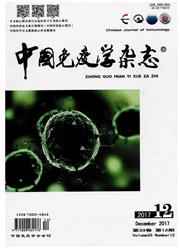

 中文摘要:
中文摘要:
目的:构建HSPC238诱饵载体,筛选与HSPC238相互作用的目标蛋白。方法:基因合成法合成HSPC238基因,sfiIA和sfiIB双酶切后与pGBKT7诱饵载体连接,获得诱饵质粒pGBKT7-HSPC238,经测序鉴定后与酵母双杂交空质粒pGBKT7共同转化到酵母菌株AH109,在营养缺陷培养基中观察pGBKT7-HSPC238的自激活作用,进一步从人胎肝cDNA文库中筛选与HSPC238相互作用的目标蛋白。结果:诱饵载体pGBKT7-HSPC238构建成功,经表型筛选检测无自激活作用,经酵母双杂交技术结合文献分析,从人胎肝cDNA文库中初步筛选发现核糖体蛋白L5(Ribosomal protein L5,RPL5)可能是HSPC238相互作用的目标蛋白之一。结论:成功构建pGBKT7-HSPC238诱饵质粒载体,且经酵母双杂交技术结合文献分析发现RPL5可能是与HSPC238相互作用的目标蛋白之一。
 英文摘要:
英文摘要:
Objective: To construct a bait vector for HSPC238,and to screen the target proteins which interact with the HSPC238. Methods: Gene synthesis method was used to synthetic gene HSPC238,then connected with the pGBKT7 vector after digesting by the sfiIA and sfiIB,to obtain the bait plasmid pGBKT7-HSPC238,then transferred into the yeast strains AH109 with the empty plasmid pGBKT7 after sequencing,to observe its self-activating effect in the nutrient deficiencies medium,and further to screen the target proteins which interact with HSPC238 from the human fetal liver cDNA library. Results: The bait vector pGBKT7-HSPC238 was successfully constructed,and it had no self-activating effect through the phenotypic screening,after the yeast two-hybrid technology with literature analysis,we preliminary screened and found that the ribosomal protein L5( RPL5) may be the one of the target proteins which interacted with HSPC238 from the human fetal liver cDNA library. Conclusion: We successfully constructed the bait plasmid vector PGBKT7-HSPC238,and after the yeast two-hybrid technology with literature analysis,we preliminary screened and found that the ribosomal protein L5( RPL5) may be the one of the target proteins which interacted with HSPC238.
 同期刊论文项目
同期刊论文项目
 同项目期刊论文
同项目期刊论文
 期刊信息
期刊信息
